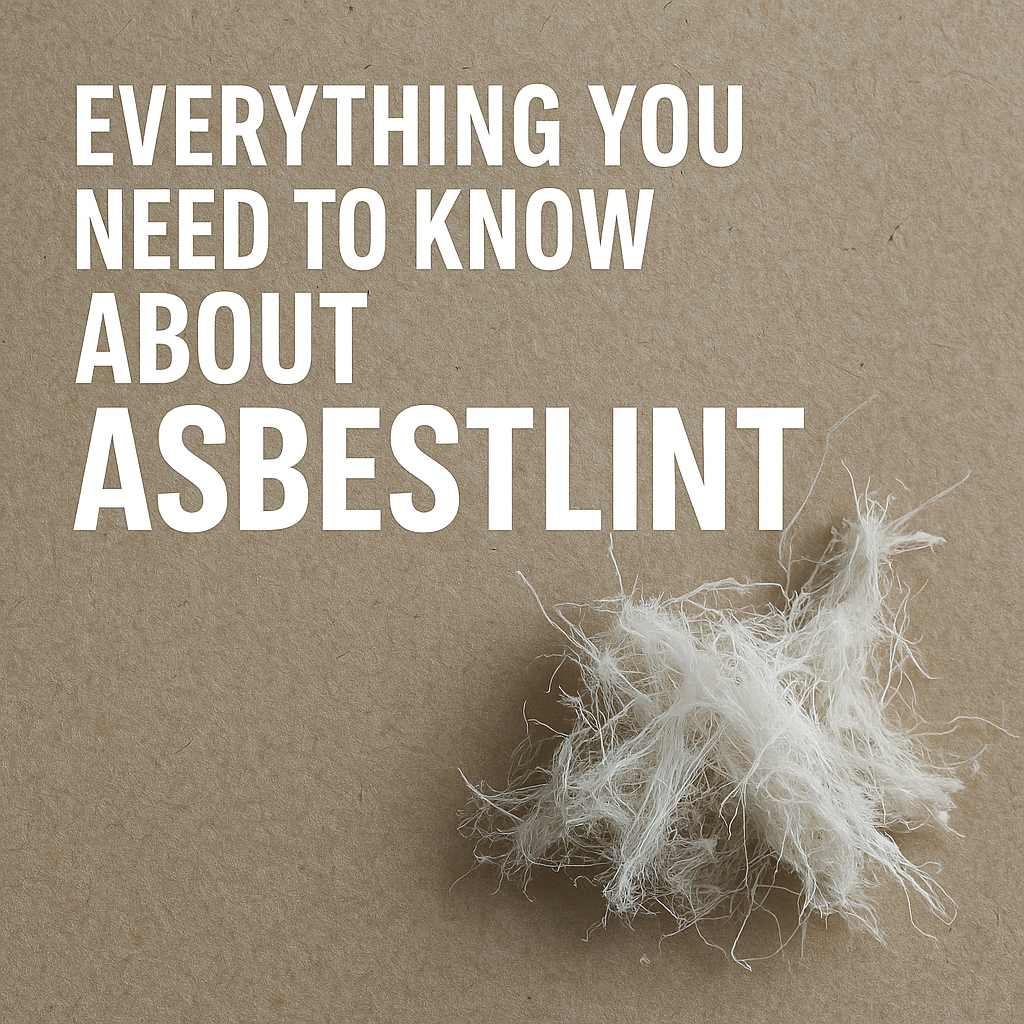Everything You Need to Know About Asbestlint: Hidden Dangers, Uses, and Protection Measures
Asbestlint is a lesser-known but critically important term in the world of construction safety, environmental health, and industrial materials. While the term may not be as commonly used as “asbestos,” it represents a hazardous substance that can pose severe health risks. Asbestlint refers to fine, lint-like fibers that originate from asbestos-containing materials (ACMs). These tiny particles can be released into the air during manufacturing, use, or demolition of materials that contain asbestos.
This article provides an in-depth examination of asbestlint, including what it is, where it comes from, why it’s dangerous, and how to manage it safely. If you live in or work around older buildings, industrial areas, or construction sites, understanding the risks and precautions associated with asbestlint is essential.
What is Asbestlint?
Asbestlint is a term used to describe the minute, fibrous particles generated from asbestos-containing materials. When asbestos is handled, cut, drilled, or disturbed, it sheds fine dust-like fibers—resembling lint—that become airborne. These particles are invisible to the naked eye but can easily be inhaled, embedding themselves into the lungs and causing long-term health complications.
Unlike other dust or lint, asbestlint is extremely dangerous due to the fibrous structure of asbestos. These fibers are sharp, durable, and resistant to breakdown, making them capable of lingering in the body for decades.
The Origin of Asbestlint
Asbestlint originates from various materials that contain asbestos. Asbestos was widely used during the 20th century in a wide range of products due to its strength, heat resistance, and insulating properties. It was used in:
-
Thermal insulation products
-
Roofing materials
-
Fireproof clothing
-
Ceiling and floor tiles
-
Pipe and boiler insulation
-
Cement sheets
-
Brake pads and clutches
When these materials begin to degrade with age or are disturbed during renovation or demolition, they produce asbestlint. This is particularly common in older buildings where asbestos was used extensively and where materials have not been properly maintained or encapsulated.
Common Sources of Asbestlint
There are numerous environments and scenarios in which asbestlint can be released. These include:
-
Demolition of Old Buildings: Structures built before the 1980s often contain asbestos in insulation, ceilings, and tiles. Demolition releases fibers into the air.
-
Renovation Work: Drilling or sanding surfaces that contain asbestos releases asbestlint.
-
Industrial Workplaces: Factories that manufactured asbestos-containing products are high-risk areas.
-
Shipbuilding and Automotive Repair: Asbestos was used in ship insulation and automotive brake linings, both of which can emit fibers.
-
Improper Disposal: Disturbing asbestos waste or illegal dumping can expose nearby residents or workers to asbestlint.
Why Asbestlint is Dangerous
The primary danger of asbestlint lies in its health effects. When inhaled, these tiny fibers can lodge in the lungs, causing irritation and scarring over time. Some of the most serious health conditions associated with asbestlint exposure include:
Asbestosis
Asbestosis is a chronic lung disease that occurs after long-term exposure to asbestos fibers. It causes scarring of lung tissue, leading to difficulty breathing and reduced lung function.
Mesothelioma
Mesothelioma is a rare and aggressive cancer that affects the lining of the lungs, abdomen, or heart. It is directly caused by asbestos exposure and has a very poor prognosis.
Lung Cancer
Inhalation of asbestos fibers increases the risk of lung cancer, especially for those who smoke. The combination of smoking and asbestos exposure greatly increases the likelihood of developing cancer.
Pleural Plaques and Effusions
These are non-cancerous conditions that involve thickening or fluid buildup in the pleura, the membrane surrounding the lungs. While not fatal, they are indicators of asbestos exposure.
Who is at Risk?
Several groups are at higher risk of being exposed to asbestlint. These include:
-
Construction Workers: Especially those involved in demolition, renovation, or maintenance of old buildings.
-
Industrial Workers: Employees in manufacturing plants that produced asbestos-containing materials.
-
Shipyard Workers: Ships built before the 1980s used large amounts of asbestos.
-
Automotive Technicians: Brakes and clutches in older vehicles often contain asbestos.
-
Homeowners: People living in homes built before 1980 may inadvertently disturb asbestos materials during DIY projects.
Laws and Regulations on Asbestlint
To reduce the health risks, many countries have implemented strict laws around asbestos use and handling. While asbestlint is not always specifically mentioned in regulations, it falls under the broader category of asbestos exposure.
United States
The Environmental Protection Agency (EPA) and the Occupational Safety and Health Administration (OSHA) have set strict guidelines for asbestos handling. These include permissible exposure limits (PELs), mandatory training for workers, and rules for abatement and disposal.
European Union
The EU has banned the use of asbestos and requires inspection and risk assessments before construction or renovation work. Professional removal services must be used for any asbestos-related work.
Australia
Australia has completely banned asbestos since 2003. Strict guidelines are in place for identification, removal, and disposal.
How to Identify Asbestlint
Identifying asbestlint with the naked eye is nearly impossible. It requires laboratory analysis to confirm the presence of asbestos fibers. However, if you’re working in an environment where asbestos may be present, it’s best to assume the material is hazardous until tested.
Here are some signs that may indicate a material could be releasing asbestlint:
-
Crumbling or powdery insulation on old pipes or boilers
-
Damaged ceiling tiles or wall panels in older buildings
-
Dust accumulation in areas with known asbestos materials
-
Loose or worn friction parts in machinery and vehicles
Safety Measures and Precautions
When working in areas where asbestlint may be present, the following safety precautions are essential:
Use Proper Protective Equipment
Wear a certified respirator with a HEPA filter. Disposable coveralls, gloves, and safety goggles are also recommended.
Avoid Disturbing Asbestos Materials
If a material is suspected to contain asbestos, do not drill, cut, or sand it. Leave it intact and undisturbed until tested and handled by professionals.
Hire Certified Asbestos Abatement Services
Only certified professionals should remove or encapsulate asbestos-containing materials. They use specialized equipment and follow strict guidelines to ensure safety.
Wet Methods
Spraying asbestos materials with water can help reduce dust and prevent asbestlint from becoming airborne.
Seal Off Work Areas
Use plastic sheeting and negative air pressure systems to contain asbestos fibers during removal or repair work.
Alternatives to Asbestos-Based Products
Today, safer alternatives are available that do not carry the health risks associated with asbestos or asbestlint. Some common substitutes include:
-
Fiberglass
-
Mineral wool
-
Cellulose insulation
-
Thermoplastic and thermoset composites
-
Polyurethane foams
These materials are widely used in construction, automotive, and industrial applications as safer alternatives.
Read also: Unlocking the Potential of Email Contacts Durostech for Smarter Communication Management
Conclusion
Asbestlint might be a lesser-known term, but its impact on health and safety is significant. It represents a very real and present danger for individuals working in or around older buildings, industrial areas, and asbestos-containing materials. With proper awareness, regulations, and precautions, exposure to asbestlint can be significantly reduced or even eliminated.
Understanding what asbestlint is, recognizing the environments where it may be present, and knowing how to protect yourself is the key to preventing serious health issues. Whether you are a worker, homeowner, or business owner, taking proactive steps to deal with asbestlint can protect not only your health but the health of those around you.














Post Comment